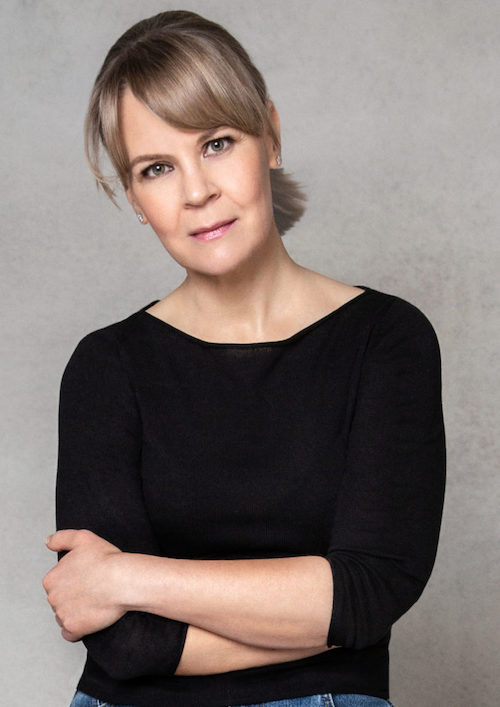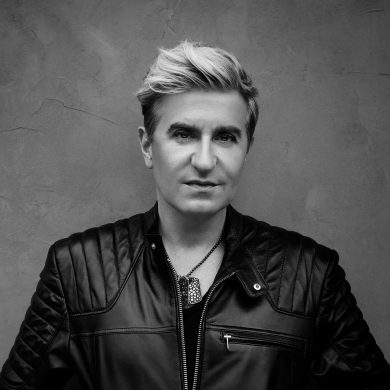Mälkki leads New World Symphony in a memorable Sibelius Second

On rare occasions, a conductor and orchestra give a performance of an often-heard work that sweeps away the cobwebs of routine and reclaims the music’s emotional impact and originality.
Susanna Mälkki led the New World Symphony in a reading of Sibelius’ Symphony No. 2 in D Major on Saturday night at the Arsht Center that was revelatory, eclipsing all that preceded it on the program.
From the first notes of the initial Allegretto, Mälkki drew playing of rapt intensity. Phrases that often sound prosaic in more mundane traversals were given emphatic thrust. Climaxes were achieved organically and the range of dynamics the Finnish conductor drew from the players was huge, from near inaudibility to some of the loudest climaxes heard at the Arsht in years. String sonorities were sumptuous and the solidity of the high impact brass was impressive, particularly the four horns.
Mälkki’s deliberate tempo in the second movement highlighted the music’s deep drama. The sudden silences had their own telling power and the contrasts between moments of uplift and despair were perfectly judged with the final chords shocking in sheer abrupt power. A clarion solo trumpet and excellent bassoons were standouts among spot on orchestral execution. The Vivacissimo (third movement) was Mahleresque in its demonic velocity, the energy emanating at full thrust from every corner of the stage. Mälkki shaped the secondary wind theme almost like a hymn while highlighting transparent timbres and textures of each instrument and section.
The big theme of the finale, one of Sibelius’ trademark inspirations, surged in full, plangent hues and has rarely emerged from the preceding darkness in such a moving fashion. Mälkki built the crescendo to a shattering climax and a gleaming triumphant, the emphatic timpani resounding over the unified, precise brass. Has any conductor led this symphony with such passion and insight since Serge Koussevitzky or Eugene Ormandy, two maestros Sibelius greatly revered?
Mälkki, principal conductor of the Helsinki Philharmonic, is widely rumored to be on the A-list for music directorship of a major American orchestra. (There are half a dozen ensembles that are or will soon be launching conductor searches.) Whether or not that becomes a reality, one hopes that she will continually return to New World, especially to further explore the Sibelius oeuvre.
The evening’s preliminary hors d’oevres were, in their own way, diverting. Sukkot Through Orion’s Nebula by James Lee III, the concert’s opener, was a New World Symphony co-commission that was premiered by the ensemble in October, 2011. Too often new works are given only one set of performances by a commissioning organization so the repetition of Lee’s score was doubly welcome. The Jewish holiday of Sukkot (Festival of the Tabernacles) is a celebration of the harvest. Lee combines that festivity with the arrival of the Messiah from the constellation Orion. Opening brass and percussion fanfares perk up the ear and Lee mixes mallet percussion with harp to create enticing harmonies. A more contemplative slower section displayed silky strings with the harp ever present before a final festive romp.
The work makes an appealing overture and was rousingly applauded and cheered by the audience. Conducting fellow Chad Goodman was thrust into the spotlight during last season’s virtual online concert telecasts. Returning to the stage for his first live performance since March, 2020, Goodman led a smooth, assured account of Lee’s composition. He drew bright toned, vigorous playing from all sections and brought out the myriad colors of the instrumentation.
Liszt’s Piano Concerto No. 2 in A Major is more of a rhapsody than a concerto in the classic sense. Its thematic material is rather thin but there is plenty of Lisztian bravura fireworks. Jean-Yves Thibaudet was fully equal to the heaven-storming volleys of octaves but he was most effective in the concerto’s quiet moments where his lithe touch made the melodic material sound better than it is. In the opening pages, Thibaudet’s playing was uncharacteristically muddy and indistinct but he dispatched the finale with fleet fingered aplomb, receiving the expected ovation.
Mälkki highlighted the wind writing and kept the orchestral lines transparent, never subordinating Liszt’s large scaled orchestration to a mere backdrop. The solo cello blended with Thibaudet’s piano to fine effect.
Thibaudet’s best playing of the evening came with his encore – Liszt’s Consolation No. 3. Producing an elegant, flowing sound from the keyboard, he probed the vignette’s lyrical depth with a lightness of articulation that made the melody and accompanying figurations clear and precise. For all his pianistic dynamism, Thibaudet is best in more poetic evocations.
Christian Reif conducts the New World Symphony in Julia Perry’s A Short Piece, Brahms’ Symphony No. 1 and Sibelius’ Violin Concerto with soloist Augustin Hadelich. 7:30 p.m. November 20 and 2 p.m. November 21 at the New World Center in Miami Beach. nws.edu
Posted in Uncategorized
Leave a Comment
Sun Oct 17, 2021
at 12:37 pm
No Comments
